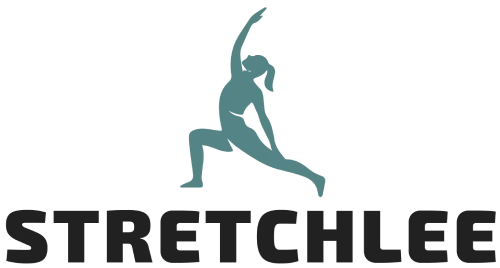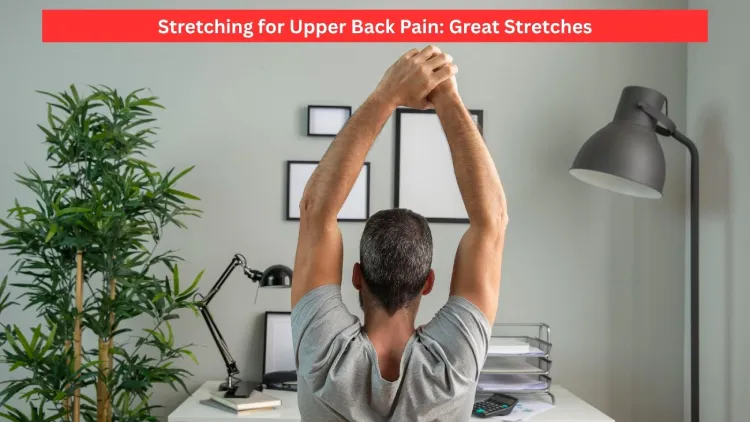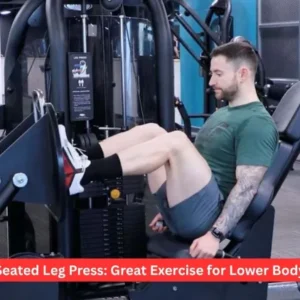Upper back pain is an increasingly worrying issue for all ages, but more so to people with unhealthy lifestyle habits, bad posture or stressed people. Be it tightness in the muscles due to hours sitting at a desk or tension between the shoulder blades, or stiffness due to the lack of any mobility, this kind of discomfort might severely impact your everyday life and well-being.
Luckily, there is an easy, natural, and most powerful stretching for upper back pain, which furthers long-term effects and eliminates the root of the pain.
This article will take you through all the necessary information about the subject of stretching for back pain, its causes, the scientifically battered advantage of adding it to your daily list of activities, and the most effective upper back stretches that can help to relieve any tension, improve the upper back posture, and prevent pain in the future.
You will also get some safety pointers, tips on what to do when to consult your doctor and practical actions that enable you to take the first steps to stretching as part of your lifestyle. Regardless of whether you want to alleviate the existing pain or secure the longevity of your upper back, all the solutions named in this comprehensive guide are the ones that you can implement as of today.

What Causes Upper Back Pain?
The thoracic spine, the upper back, is the region behind the part of the neck which goes down to the lowest part of the rib cage. This is a less mobile area as compared to the lower back; however, it is significant in stabilisation of the spine and the maintenance of good posture. The causes of pain in this area may be various:
1. Poor Posture
Hunching over a computer screen is one of the most widespread causes of upper back pain. With time, slouching causes overstraining of the muscles and the spinal discs.
2. Muscle Tension
Muscles that are tightly stretched in the shoulders, upper back and neck may cause stiffness and soreness. This may be caused by the constant movements or holding the bodies in a single position over long periods.
3. Overuse and Stress
Heavy lifting, using one shoulder to walk with a bag or severe physical activity will lead to stressing the upper back muscles.
4. Sedentary Lifestyle
The absence of movement causes back muscles to be weakened and less resistant to pain and damage because blood circulation decreases.
5. Stress
Emotional stress may be so physically represented as on the neck and upper back, and this very often leads to the formation of knots in muscles and discomfort.
These problems are mainly muscular and tend to react positively to stretch, which explains why it has been considered an excellent muscle-wise way of first-line treatment of pains and prevention as well.
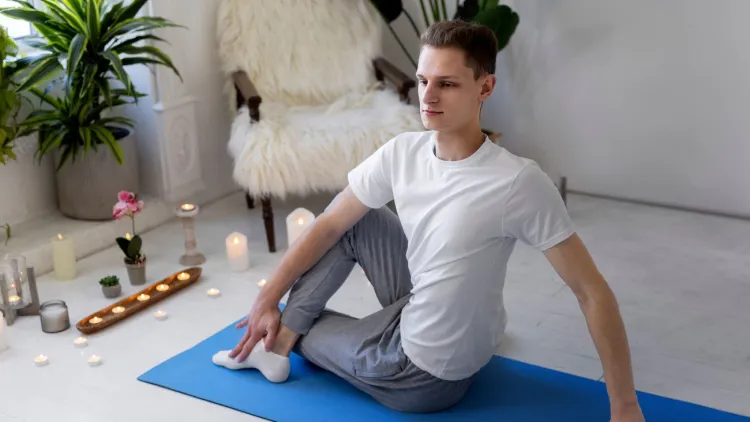
Benefits of Stretching for Upper Back Pain
Establishing a routine that targets stretching as an upper back pain reliever may have various short and long-term advantages. More precisely, let us have a closer look:
1. Pain Relief
Stretching helps the muscles that are tense, which creates pain. When you stretch the muscles delicately, you take the pressure off them and increase the blood supply to the injured point, making you less sore.
2. Improved Posture
A lot of the problems that afflict the upper back are associated with problems of posture. Stretching will also assist you in retraining your body to stay straighter, but it will also assist in retraining, combined with strengthening.
3. Increased Flexibility
The inability to move your body due to stiffness in the upper back restricts the range of motion. Frequent stretching will result in being flexible and hence one could easily do the day in day out tasks and movements without much discomfort.
4. Stress Reduction
The reason is that stretching induces relaxation, and it does this by releasing endorphins and easing tension in muscles. This is particularly essential to those with back pain associated with either emotional or mental stress.
5. Injury Prevention
A well-conditioned upper back is treated more flexibly and, therefore, less likely to get strains and injuries. This kind of range of movement with a muscle balance when stretching keeps you mobile and shows you how to avoid the chronic or acute flare.

Best Stretches for Upper Back Pain
The way to control upper back pain with the help by incorporating effective and gentle exercises in your daily routine. Some of the most effective stretches for upper back pain are described below. Slowing them down, working with breath and relaxing. It is always best to stretch after a warm-up period.
1. Child’s Pose
One such Yoga position that aids in the release of upper back pressure and decompresses the spine is called the Child’s Pose.
The Way To:
- Put yourself on the floor and sit down on your heels.
- Fold your arms straight in advance and touch your head to the floor.
- Make your chest descend to the floor.
- Maintain a pose for 30-60 seconds, breathing deeply.
This position is relaxing and pain-relieving as it stretches the spine, shoulders, and upper back.
2. Cat-Cow Stretch
This dynamic stretch enhances the back flexibility and stretches the back muscles.
The Way To:
- Begin on all fours with the hands directly under the shoulders and the knees directly under the hips.
- Exhale and hold your breath (Cow), bending your back and raising your head and your tailbone.
- Breathe out, inhale and curl your spine and tuck your chin to the chest (Cat).
- Stay back and forth between the two 8-10 reps.
Cat-Cow is perfect to loosen up the tight thoracic spine and straighten the spine.
3. Over Chair Thoracic Extension
The area of the stretch is the mid back, which tends to be tight in people who sit all the time.
The Way To:
- Sit on a chair that has a firm back.
- Put your hands behind your head.
- Bend backwards at the top of the chair and continue to your upper spine.
- Stay in the position for 10-20 seconds, then return to an upright position.
- Do 35 times.
It is a fantastic stretch against slouching and to expand the chest and thoracic spine.
4. The Needle Thread
This straining relieves the area between the shoulder blades and stretches the upper thoracic muscles.
How It is Done:
- Begin on all fours.
- Snake your right arm underneath your left arm and drop down the right shoulder and head to the ground.
- Pause and breathe during the stretch for 30 seconds.
- Do the same on the other side.
Thread the Needle is an excellent option when it comes to stretching the upper back pain (particularly as a result of the extensive working hours).
5. Wall Angels
This motion increases the motion of the upper back and also aids in correcting the slumped shoulders.
How It is Done:
- To stand, lean against a wall with the feet a few inches in front of the wall and lower back to the wall.
- Put up your arms so that they make the shape of a goalpost, leaving the elbows and hands against the wall.
- Slowly bend and straighten up your arm as you would when you are making a snow angel.
- Choose 2-3 sets of 10.
Wall Angels can be particularly useful when it comes to adjusting the posture and providing long-term alleviation of upper back pain.
Tips for Safe and Effective Stretching
Here are the safety suggestions to make your stretching for upper back pain as effective as possible:
- Warm Up: Light exercise, such as shoulder swings or walking, to get the muscles stretched out.
- Breathe Deep: Deep breathe in, and breathe out slowly to relax the body to stretch.
- Do not Bounce: Never enter into a stretching movement violently, but rather make it slow with jerky movements.
- Concentrating on form: Look into a mirror or tape your back to see that you sit correctly.
- Third, Be Consistent: Stretching should be done daily to give the best results. Take 1015 minutes a day.
Pay attention to your body; you should not hurt yourself when you are stretching. In case you experience sharp pain, cease the movement and relax it or address a specialist.
When to See a Doctor
Although stretching helps a majority of those suffering upper back pain, it is worth noting that professional help is needed when the condition is getting out of control. In case of experiencing the following, do seek medical attention:
- Constant pain or getting worse and failing to respond to rest
- Having pain with slight numbness or tingling in the arms.
- Weakness or lack of coordination
- Trouble breathing or chest pains
Such symptoms may be the burgeoning of a more serious disease, like, for example, the herniated disc, compressed nerve, cardiovascular problem, etc., which needs to be identified and addressed.
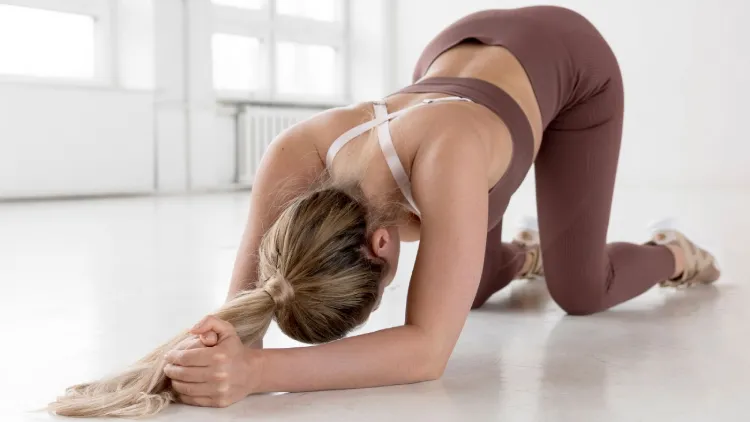
Final Thoughts
Be it some occasional stiffness or prolonged pain, stretching for upper back pain is an effective and readily available solution. After adequate perseverance, specific stretches will likely shrink the pain, stimulate proper posture, increase flexibility, and potentially guard against future problems.
The trick is to remain conscious of the needs of the body and make stretching a daily routine. Combine your routine with proper ergonomics, frequent motion and fluid intake to obtain the best outcomes. As you may recall, the well-nourished spine ensures a pain-free, more active lifestyle.
And so roll out your mat, breathe deep into your lungs, and get stretching, your mid back seems to appreciate it.
Frequently Asked Questions
1. What is the effective stretch to remedy upper back pain?
Child Pose is one of the best yoga poses to stretch upper back pain as it stretches the spine, shoulders, and upper back and helps in the process of relaxation. Among other super effective stretches, we have Cat-Cow stretch, Thoracic Extension over a chair and Thread the Needle. The movements aim at relieving tension and tightness and enhancing flexibility and posture.
2. How many times can I stretch the upper back in pain?
Depending on the outcome preferred, you ought to stretch to relieve upper back pain once in a day or at least 3-5 times per week. Stretching regularly, one can decrease the amount of pain, avoid tightening of muscles, and enhance mobility in the long run. Never push too much and just listen to your body and stretch accordingly, to prevent injury.
3. Is upper back pain curable by only stretching?
Even though stretching to cure upper back pain works remarkably well to eliminate the muscular tension and balance our posture, it will not necessarily get rid of the upper back pain when the cause is purely structural or associated with a medical condition. A proper ergonomics, strengthening exercises, as well as medical treatment (where required) should be added to the stretching to have a complete recovery.
4. Could I stretch even with severe pain in the upper back?
In case pain in the upper back region is severe or it is accompanied by such symptoms as numbness, tingling, weakness, and chest pain, a healthcare expert should be consulted prior to any stretching program. Yet with mild or non-severe muscular pain, easy and well-performed stretching may be safe and healthy.
